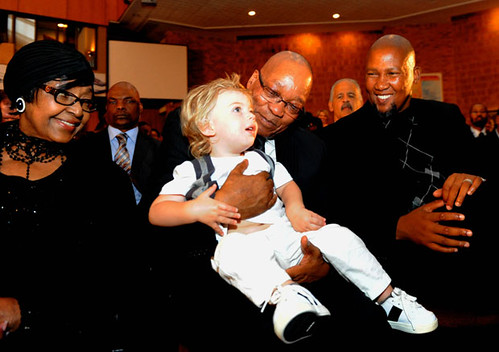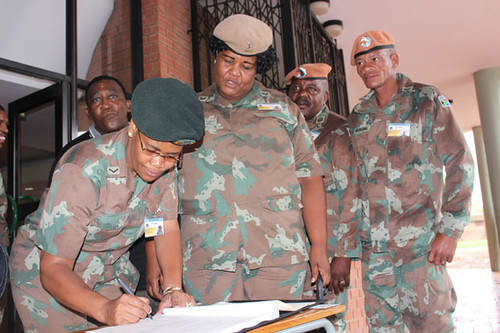This is one of numerous articles I wrote for the Sunday News (Tanzania) column "Letter from Butiama" between 2005 and 2011. Publication date: 4th February 2007.
The political landscape has changed since then, but I believe that some of the points I raised in 2007 could still be valid today in light of the leadership battles that have recently surfaced in one of the opposition political parties.
*************************************************
Tomorrow Chama cha Mapinduzi (CCM), the
ruling party turns thirty.
In those thirty years Tanzania has changed
considerably. The most significant of the changes is the fact that when the
Tanganyika African National Union (TANU) merged with Zanzibar’s Afro Shirazi
Party (ASP) to form CCM in 1977, Tanzania was a one-party state.
Today, CCM shares the political platform
with several other political parties after Tanzania adopted a pluralist political
system in 1992.
That after we adopted a multiparty system
CCM has won three general elections suggests that it is doing something that
the opposition parties cannot.
CCM members will say that their victories
are a measure of the strength of their party, and the articulation of their
policies to the electorate, which finds meaning with the voters. They will also
say that it is a measure of the weakness of the opposition.
CCM’s results could also be explained by
an event from the past. Only 20 percent of CCM members told the Nyalali
Commission, which was mandated by President Mwinyi to collect the views of
Tanzanians on their preferred political system, that they want a pluralist
political system. CCM decided that it was significant enough to warrant
adoption of a multiparty system, given the fact 56 percent of those who
preferred a singly party system had some reservations about CCM’s performance.
Although skeptics always maintain that CCM’s views are not representative of the wider views of other non-CCM Tanzanians,
election results seem to suggest that CCM member’s views are decisive.
I suspect that the 80 percent against and
the 20 percent for pluralism ratio from the Nyalali Commission findings remains
constant. Those views remain in the subconscious of voters; when they are
dissatisfied with CCM they shift allegiance to the opposition, but when CCM
seems to live up to their expectations, they shift back to CCM, showing their
true colours – green, yellow, and black.
There is phenomenon in the soft drinks
market that suggests that when a new soft drink is introduced in a market,
consumers temporarily switch to the new drink, and after the novelty wears off
they return to their usual drink.
I have no intention of belittling the
opposition parties, but I believe that the same analogy applies to Tanzania’s
political landscape. I recall the excitement and enthusiasm surrounding the
first multi-party elections in 1995. It looked like CCM would loose.
CCM mounted a counter campaign that
included recalling to active duty some retired cadres, including Mwalimu Nyerere,
and succeeded in winning the Mainland presidential elections by more than 60
percent of the vote. It also won 214 parliamentary seats compared to the
opposition’s 55.
The opposition parties have never recovered
from the gains registered in that first election in 1995. The leadership in the
opposition parties spent a great deal of their time squabbling between
themselves, the voters went back to the party they had been used to since 1977
and the voter’s political choice was limited.
The Mainland presidential elections results
in 2005 saw CCM emerge the winner, capturing over 80 percent of the vote. The
opposition seats in parliament were reduced to 43.
Even if the influence of Takrima,
campaign hospitality, is taken into consideration, with CCM candidates usually
taking the larger blame for throwing the more lavish parties, the results, in
my view should not have been different. In fact, if it is generally accepted
that Takrima was widely used in the recent elections then it is fair to
say that it was a multi-party phenomenon. CCM candidates did not have a
monopoly in their generosity to voters.
Winning elections is one thing, and
probably the easier part. Transforming that victory to improving the lives of
the voter is the difficult part.
In some African countries where political
parties that won independence have been removed from power through the ballot
box, those countries have gone through periods of turbulent politics, with the
new governments, formed out of coalitions of differing political groups,
turning on each other and turning the task of governing to one of infighting and of betraying the trust of their electorate.
To wish that such political turbulence
should not unfold in Tanzania is to wish CCM should rule forever. It’s not an
easy choice.
It would be radical to suggest,
particularly in this newspaper, that it is in our national interest that the
organizational and leadership capacities of opposition parties should be
strengthened. But I believe it is wise to try out this suggestion.
Such a provision would be an insurance
policy for the majority of Tanzania’s voters that should they decide to do away
with the usual and try the new that the change will not spring up unpleasant
surprises.
The only problem is how to stem the one-way
traffic flow of opposition party converts to Chama cha Mapinduzi.



.jpg)
+(640x428).jpg)
.jpg)
.jpg)
.jpg)

.jpg)
.jpg)
.jpg)
.jpg)
.jpg)
+(640x428).jpg)
.jpg)
.jpg)
.jpg)
.jpg)
.jpg)
.jpg)
.jpg)
.jpg)
.jpg)
.jpg)
.jpg)
.jpg)
.jpg)
.jpg)
.jpg)
.jpg)
.jpg)
.jpg)
.jpg)
.jpg)
+(630x416).jpg)


